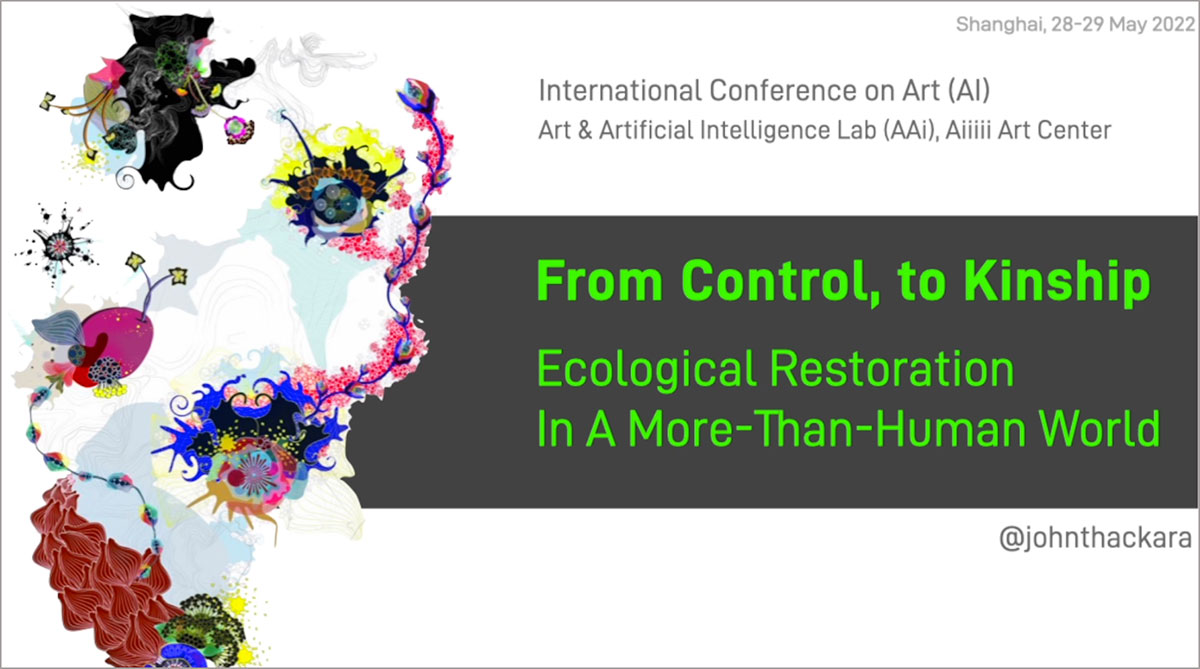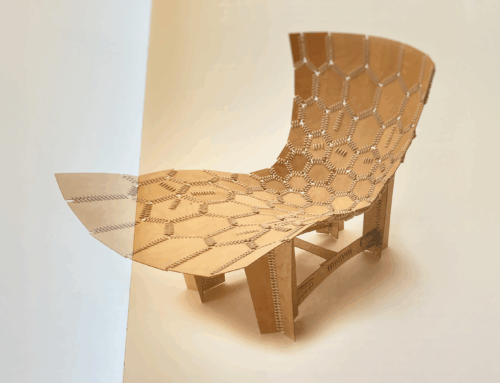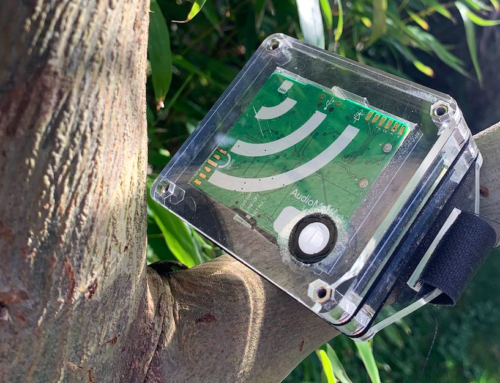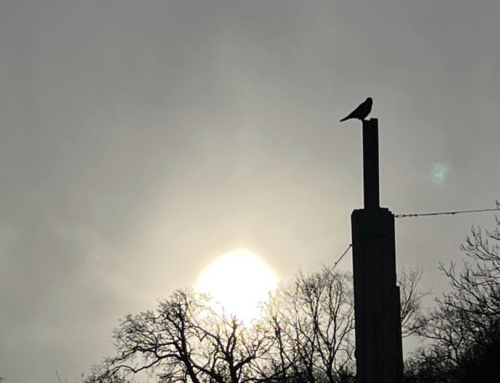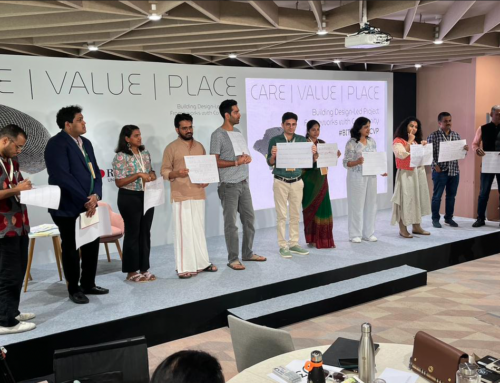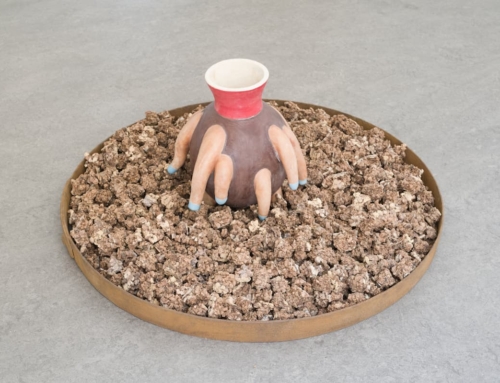The following is a transcript of my keynote talk on 29 May at Quantum(Quantum(Quantum()))): Artificial Imagination – the 2022 aai International Conference on art(ai) hosted by Tongji University in Shanghai.
[The video is here.] Six months ago, in a talk titled Beyond Calculation, about AI and Sustainability, I asked whether artificial intelligence could be enough, on its own, to drive the ecological transition we so desperately need. My key point then: a just transition will happen when we see nature differently, relate to nature differently, and understand the purpose of development differently. That’s a big challenge. Transformation on that scale can seem un-imaginable from the perspective of today.
So can AI change the way we experience and understand the world? Can it help us stop treating the world as some kind of machine that we can control, and realise, instead, that that everything is connected in this living world – and that we are part of that? Whether it’s sub-microscopic viruses, mosses, and mycorrhizae – or trees, rivers and climate systems – modern science has confirmed an ancient wisdom: All natural phenomena are not only connected. Their very essence is to be in relationship with other things -including us. This change in perception has profound consequences for notions of ‘development’. We are beginning to realise that ecological restoration is not just a remedial activity – repairing the machine. It’s more about learning how to coexist with nature in a spirit of reciprocity and kinship. The health of nature, and the wellbeing of people, become a single story. So that’s the question: Can AI foster new ways of knowing and being in the world? As medium of attention; as a medium of connection; and as a medium of relationship with the living world?
New ways of knowing
Major AI projects are already underway that monitor the planet’s ecosystems at multiple scales – such as planetary-scale observation from multiple satellites of Planet Labs. The tools and connectivity are being deployed, today, to monitor the planet’s vital signs in real time. These observational projects are not all top-down and satellite-based. In Switzerland, the Crowther Lab has launched an open data platform, Restor, that connects people everywhere to local restoration activities. Restor connects people to scientific data, supply chains, funding – and each other – to increase the impact, scale, and sustainability of restoration efforts. These multi-scalar visualisations are undeniably striking. Add them all together, display them on a giant screen, and we’d get a wondrous picture of the planet’s health – place by place, patch by patch. The ‘global dashboard’ metaphor is tremendously attractive to business and policymakers – but it contains several dangers. First, the dashboard metaphor reinforces the illusion that nature is like a faulty machine that can be fixed. You could compare a planetary dashboard with intensive care in a modern hospital. The tubes and gadgets surrounding a sick patient are technical marvels of observation – but they tell us little about the reasons the patient got sick in the first place. Another problem with the dashboard metaphor? Being being top-down, and outside-in, it excludes forms of knowledge and experience that cannot be represented in data, and on screens. Its limited representational pallette affords a diminished understanding of living systems in their unique contexts.
The French philosopher Bruno Latour advocates that we move on from the “blue marble’ perspective of earth observation, as seen from by astronauts in outer space . In place of this familiar but distant image – of a blue-and-green globe – we need to experience our places – our lifeworlds – in closer and more intimate ways. A redesign of earth observation is already underway in what scientists refer to as the ‘critical zone’ – a layer of the planet that stretches two or three kilometres in each direction above and below us. All the organisms and interactions important to life are found in this zone. To monitor its vitality , scientists have established critical zones observatories throughout the world – including this one in China. They use sensors and highly technical instruments to collect data in these outdoor laboratories. This work is earth-based, and involves diverse research domains, as you can see in the box: ecology, microbiology, geophysics, and so on. We’re going to need help making sense of this complex interplay of data – and that’s where AI comes in. I don’t know how – but I’m describing an opportunity for AI. Development and ecological restoration, in this context, are less about leaps of the imagination, more about connection:-connection with place; connection with each other; and above all, connection with the living. Ecological thinking is the ability to see the patterns of life as a connected whole. Designers and artists can use their creative skills to help us experience being part of nature, not outside. The word, experience, I believe, is key. I don’t know how, but I’m certain art and AI can awaken the experience of interconnectedness.
From control, to kinship
The children in this image have spent their morning on a farm. For them, this visit has been a gateway to nature connection. Experiencing the world as a web of connection – between people, place and nature – has been forgotten in most of the West – and is hard to teach in the confines of a classroom, or a computer screen. These connections are best explored at the scale of the farms and bioregions that surround our cities. On a farm visit, one can learn first-hand learn that the health of the soil, and the health of people, are the same story. Soils, one discovers, are the most complex microbial ecosystem we know. In healthy soils, an enormous range of partners interact, and collaborate. Soils are a fantastic example of kinship, among all of life, in practice. A single teaspoon of healthy soil may contain thousands of species, a billion individuals, and one hundred metres of fungal networks: Nature’s Internet. These hidden lifeworlds are invisible not only to to satellites, but also to most of us in the modern urban world.Unseen, they’ve also been uncared for – until now. Now, thanks to the marvels of visualization, the hidden lifeworlds of soils are beng brought into view. Julian Liber, for example studies the rhizosphere – the soil around the root of plants where microbial activity is especially high. Helped by AI, he tracks fungal hyphae – their rate of growth, how often they branch, and other metrics. The “rhizosphere” as scientists to describe the plant-root interface, is a superorganism in its own right. Another good indicator of soil health is the number and vitality of worms. Worm watching is popular among students – and this artist has now developed worm listening, too. Combine low-tech citizen science, with the analytical potential of machine learning, and observations from diverse sources can now be used to make diagnostic maps. Ecological restoration is a current practice, not a promise – and it’s happening everywhere, including in cities.
Civic Ecology (sometimes called ecological urbanism) weds the practice of city design and planning with the insights of ecology. It involves the interplay of multiple environmental disciplines – from climatology, to psychology, – much as we saw at Critical Zones observatories. In cities today, civic ecology is practised in a large number of micro-interventions – as shown on this list. I won’t go through them in detail – but think of this as a Civic Ecology to-do list. Urban forests play vital roles in urban ecologies. They are a home to wildlife, space for recreation, and insurance against flooding. Trees manage carbon emissions, control water flow and air quality, and regulate temperature and energy usage. Planting and maintaining trees also creates jobs and livelihoods. But integrating trees and cities is more complex than most people realize. Fifty percent of urban trees don’t survive after 10 years of life – even though the benefits generated by those same trees increase until they are 50 or older.
TreesAI is a new platform that helps city managers improve the ways trees are planted and maintained in urban forests. The platform helps city managers avoid damage to existing ecosystems when planting urban forests; how to prevent seedlings dying through neglect; how to balance the water needs of new trees with existing water flows. And so on. Platforms like TreesAI are not control systems. Urban forests cannot be automated. But urban forests are a good example of how man’s Internet and nature’s internet, can enable beneficial coexistence – kinship, if you like – between different networks.
Microbial urbanism
At an even smaller scale than nature’s internet – in fact, invisible – microbes play a key role in the function of ecosystems – inside cities and outside. They contribute to biodiversity, nutrient cycling ,pollutant detoxification, and human health. Microbes play a crucial role in nature’s material cycles and food webs. They account for most of the biodiversity in urban settings. Here we encouner another profound change in priorities. For hundreds of years, it has been a focus of city design to keep nature, and especially microbes, out. Now, our design task is to welcome beneficial bacteria back and make them feel at home. The purpose of microbial infrastructures, and microbial urbanism, is to enable kinship. Design for kinship with microbes has already started. It has a name: Microbiome-Inspired Green Infrastructure (MIGI). As described by Dr Jake Robinson, MIGI is a nature-centric infrastructure designed to enhance health-promoting interactions between humans and environmental microbiomes – in the air, on plants, in soils, on buildings. The design task is to enable their healthy coexistence. When I told Professor Lou Yongqi about Jake Robinson’s work on MIGI, he asked me: “how would this work at a campus scale?”. The answer is that the Tongji University Campus would be a great site for a variety of MIGI trials. We could test associations between (micro) biodiversity exposure and human health. We could measure the impact of different design interventions on the health of elements. We could test the efficacy of different exposure routes between microbes and humans in a campus context. A tough design challenge remains. If ninety ninety percent of life is invisible – how do we design for that? The good news, once again, is that real-world examples already exist. People are working with bacteria in an environmental context today. This picture, for example, shows a lacto-fermentation kitchen in which foods are preserved using lactobacilli. This sake brewery is an especially good real-world example of people working mindfully with bacteria. Dr Maya Hey, a researcher with the Future Organisms project, has studied how brewers attune to the social, spatial, and temporal scales of life within the brewhouse – including, especially, the microbes that remain invisible. Natural here means that they do not use lab-optimized strains of bacteria or yeast. The fermentation process relies exclusively on ambient and endogenous microbes. They do not add anything. Most of their practices are about skilfully tending an environment that’s conducive to transformation.
Attunement
These are mostly hands-on practices. The brewers engage with microbes interactively .“If fermentation has taught me anything, says Dr Hay, it’s that microbial time has its own pacing”. Rather than abide by a predetermined production schedule, the brewers utilize practices like call-and-response, and work song, to coordinate the fermentation process among human and microbial participants. Hay describes this as attunement – the ability to notice, apprehend, and connect with others in meaningful response. My provocation here: I don’t know how, but I’m confident that AI can be an aid for attunement.
eDNA metabarcoding
On a much larger scale than that sake brewery, we are also designing with microbes in landscape restoration projects – for example, on lands damaged by mining operations. Where mine sites are being rehabilitated back to their native ecosystems, eDNA metabarcoding now helps ecologists determine what insects, pollinators, and bacteria used to live there. Soil restoration is also happening in cities as a feature of the civic ecology I mentioned earlier. A lot of this work involving citizen volunteers working alongside ecologists and soil health experts. eDNA can greatly enrich their work. The information revealed by eDNA analysis is extraordinary. What insects, pollinators, and bacteria used to live there. But deciding how to use this information in the context of ecological restoration – what should be planted there, next – is complex. Once again I don’t know how AI can help with soil restoration – only that surely make a critical contribution.
Indigenous knowledges and AI
Whilst ‘systems thinking’ is a relative novelty for most of us in the industrialised world, sensitivity to ecological contexts is quite natural to shepherds and other pastoralists who have lived on the land for generations. Small-scale herd-owners, for example, practice a form of agriculture productio on arduous drylands that dates back some 6,000 years. The lands they work on are home to approximately 80 percent of the world’s biodiversity. Indigenous peoples have a closer relationship with the ecologies of their land than those who practice ‘production agriculture’ – or who view landscapes from the window of a high-speed train. But the intimate, fine-grained knowledge of people who work so intimately with the land can always be enhanced. A project in India called
Decentralising Digital, or DEDI, explores the possible roles that tech might play in enhancing ago ecology practices that are already successful. The palette of tools in DEDI: AI, machine learning, mesh networks, the Internet of Things, voice enabled Internet. These small-scale coffee growers in Karnataka, in rural southern India, have developed an holistic, whole-system approach to their land over generations. They have a deep connection with the forest, and preserve biodiversity and soil health as a daily practice – not an afterthought. The design brief in DEDI: how to enhance these farmers’ ability to assess the health of their soil, and their care for biodiversity. The deep experience of the farmers is a starting point, not an afterthought, in DEDI. Farmers are part of the design process, as is the larger community of the village. Indigenous means: “having originated in and being produced, growing, living, or occurring naturally in a particular region or environment”. This definition surely applies to ecological restoration as whole – not only to small scale coffee growers. Indigenous knowledges are not recipes, as if for a cake. They cannot be extracted, printed on method cards, and applied around the word at will.
From microbiome to bioregion
Indigenous knowledges are situated, place-specific, and relational.They operates at multiple scales – from microbiome to bioregion . They are also shaped by multiple timescales – from geological time, to the bacterial time of fermentation. Reconnecting with the living and the real. To conclude: A new form of development is emerging in which we no longer think of the oceans, fields and forests as ‘resources’ or ‘solutions’. We have started to engage with nature as a complex of constantly changing lifeworlds. We are learning how to experience the health of a place, and of the persons who inhabit it, as a single story. Ecological restoration – at the heart of this new approach to development – involves multiple interacting practices: Science, Art, Social Innovation, and Design. AI, I believe, can be a medium of experience and learning that enables these practices to interact. Kinship – the work of reconnection with all of life – is not incompatible with innovation, or scientific inquiry. On the contrary: scientific and indigenous knowledge can complement each other. They can expand the menu of what’s possible – from eDNA analysis of damaged soils, or AI that translates indigenous languages. In combination with other forms of knowledge, the true potential of AI is to help us reconnect with the living and the real.
